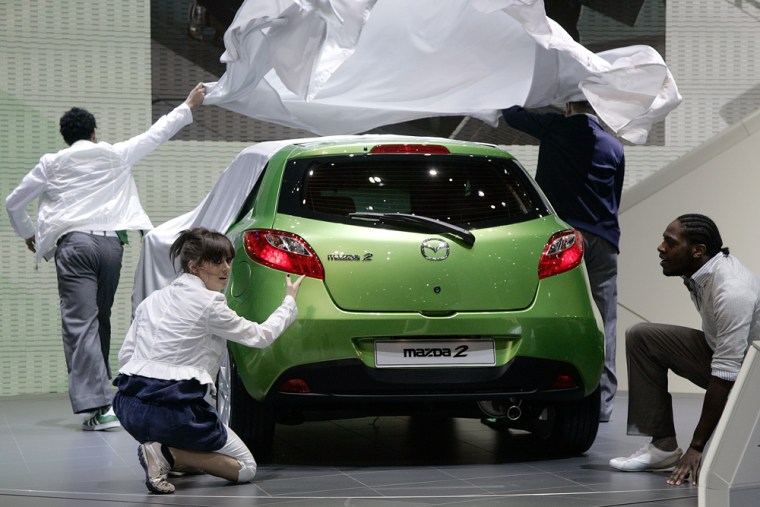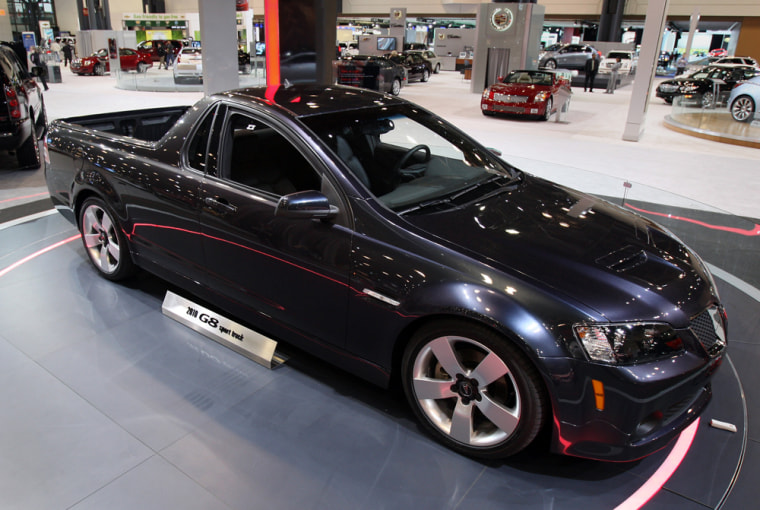The word “globality” might sound like a presidential malaprop, but it’s a real word and Chrysler’s CEO Robert Nardelli used it last Wednesday to describe the evolution of the U.S. auto industry during his keynote speech at the opening of this year’s New York International Auto Show.
Nardelli is certainly on to something.
The U.S. auto market is becoming ever more international and the barriers between regional markets are eroding. Chevrolet, a quintessentially American brand, is now the fastest-growing brand in Europe using cars sourced from Korea and built to global standards, while new models from Italy’s Fiat and Alfa Romeo are gathering interest from Americans because of the expectation they will soon be sold on these shores. And to cap it all India’s Tata is poised to acquire British brands Land Rover and Jaguar.
Perhaps the best example of this trend toward a condition of worldwide relevance in New York was the World Car of the Year award — a prize bestowed at the New York show on a new car from anywhere in the world voted as the best by a panel of international journalists.
This year’s winner was the two-door Mazda2 subcompact, and it’s not sold in the United States. Also known as the Mazda Demio, the vehicle sells in Japan, Europe and a four-door version goes on sale in China this spring. But the days when small cars that are popular elsewhere in the world but not available in the United States are numbered.
While Mazda may not yet import the Mazda2, Honda has enjoyed success with its hot-selling Fit subcompact, which comes from Japan and is also sold in China and South America. The Fit is called the Jazz in Europe, and also sell in parts of Asia, Africa, the Middle East and Australia.
Honda unveiled the latest version of the Fit for the U.S. market in New York, improving the little car’s refinement with only a small increase in price.

Among the significant new models shown in New York was a pair of V8 Pontiacs. Traditional American iron? Maybe, but the Pontiac G8 and an as-yet-unnamed car-based sport truck shown at the New York show hail from Australia.
Australians expressed pride at the opportunity to sell their wares in the world’s largest car market, seeing it as a promotion to the big leagues.
“It is a big deal for us,” said Sean Poppitt, news editor of Wheels magazine in Australia, who traveled to New York to chronicle the exploits of the home team. “(The annual total Australian market of) 1.1 million units is the equivalent of a terrible month in North America.”
Germany’s BMW boasted of its plan to bring Euro-style diesel versions of its 1-Series and 3-Series models to the U.S. this year, offering customers the chance to boost their fuel economy, while Chrysler showed V6 versions of its upcoming Challenger muscle car which will achieve 25 MPG on the highway.
Hyundai used the venue to unveil its sporty new rear-wheel-drive coupe, which will be available with turbocharged four-cylinder or V6 power, giving consumers the ability to choose between the ferocity of pumped-up turbo power or the refinement of a V6 engine.
The Korean company highlighted the rear-wheel-drive configuration of the car, which is so far called the Genesis Coupe, with a wheel-spinning drifting demonstration on a cordoned-off section of the show floor, emphasizing the difference between the car and its front-drive competitors such as the Scion tC. Toyota owns the Scion brand.
Nissan revealed the next generation of its Maxima entry-luxury sedan, a product from a Japanese manufacturer that is unique to the U.S. market.
But these were essentially the only real news at the New York Show, which was criticized by many of the journalists in attendance as the worst in a decade for newsworthy global product announcements. The reason for this weakness is attributable to Nardelli’s globality. The Geneva auto show took place just two weeks ago and several cars such as the Volvo XC60 crossover vehicle which would have been natural to debut in New York were instead introduced in Geneva.
Responding to the observation that this year’s Geneva show was uncommonly relevant to the U.S. market Angus MacKenzie, Motor Trend magazine’s editor-in-chief, asked, “Could it be that the U.S. market is becoming more relevant to the world?”
So it is, and so rather than the show season for new U.S. products starting in Detroit in January it effectively started four months earlier in Frankfurt.
Buick exhibited its Riviera concept which it debuted at last year’s Beijing auto show as a concept aimed for the Chinese market where Buick is a dominant player. Thanks to globality, however, photos of the beautiful luxury coupe reached the U.S., where home market customers have clamored to see the car in person and possibly have the chance to buy one eventually.
Smart, a brand of tiny cars made by Germany’s Daimler AG, was on hand to show off its existing models even thought the company has effectively sold out its planned number of cars to import for the next two years.
Roger Penske, CEO of Smart’s exclusive distributor United Auto Group, said that the company has been pleasantly surprised at the high level of equipment buyers are specifying for their Smart cars.
“This is not a customer who is buying the car because it’s cheap,” he said. “People are also interested in its user-friendliness and fuel economy,” he added.
Smart’s strength isn’t just limited to the Big Apple and Hollywood, either. Pittsburgh has racked up big sales for the company too, Penske reported. “Places like that are dying for cars,” he said.
With the end of the auto show season, now automakers can concentrate on building and selling the new models they’ve introduced at the shows. And of course they can begin preparing for the start of the next show season in Paris in September, where in addition to weirdly-styled French cars that won’t come to the U.S. anytime soon we can expect to see the ones that will reach our shores.
